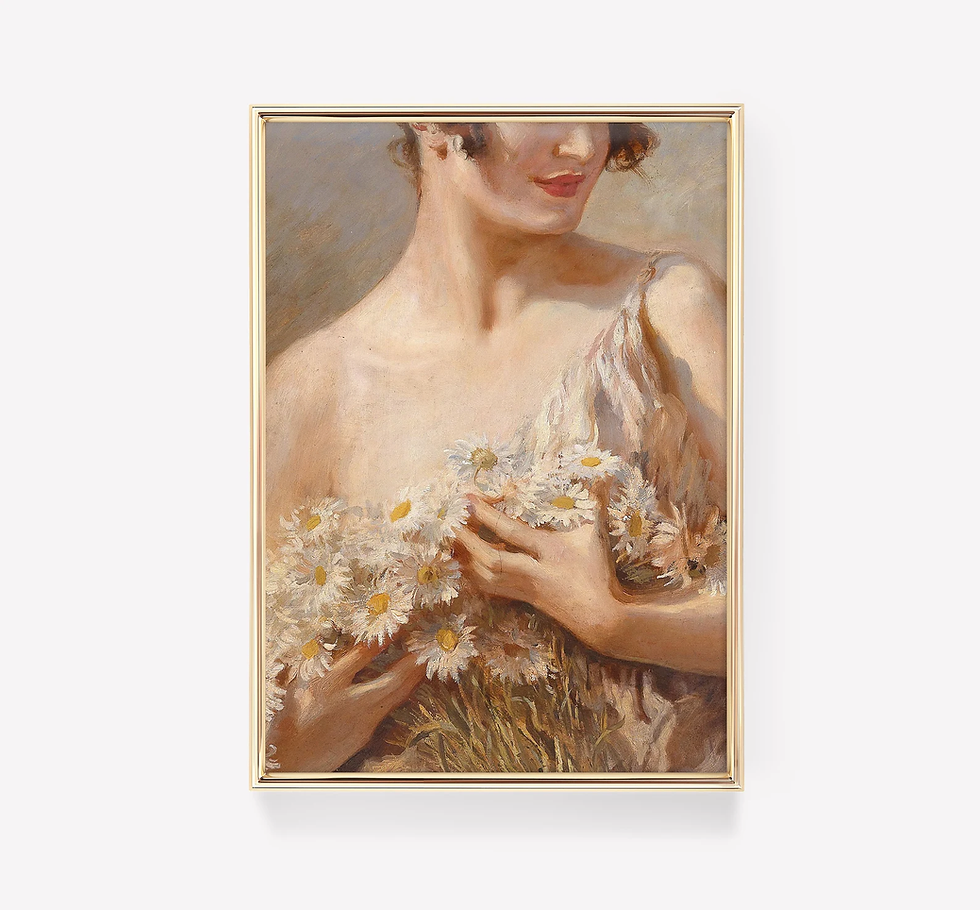Leopold Schmutzler's "Lady with a Bouquet of Daisies" painted in 1940, presents an enchanting yet complex tableau, one that is reflective of both the artist's personal evolution and the broader socio-political context of the era. In this exploration, we delve into the intricate details of this artwork, uncovering its stylistic elements, the artist's motivations, and its historical and cultural significance.
The Artist: Leopold Schmutzler - A Portrait of Complexity
Leopold Schmutzler (1864 – 1940), a Bohemian-born German painter, was renowned for his portraits, semi-erotic female figures, and Rococo-style genre scenes. His works often showcased a realistic style blended with Art-Deco elements, a combination that lent a unique character to his paintings.
Stylistic Elements: Realism Meets Art-Deco
In "Lady with a Bouquet of Daisies," Schmutzler's realistic style comes to the fore. This style is characterized by a clear and detailed depiction of the subject, capturing not just the physical likeness but also conveying a sense of the subject's persona. The Art-Deco influence, meanwhile, is evident in the streamlined forms and perhaps in the decorative elements that subtly permeate the work.
The Subject and Symbolism: Elegance and Ideology
The painting features a lady holding a bouquet of daisies, a subject that seems simple yet is laden with symbolism. Daisies, often associated with innocence and purity, may contrast with the complex period during which Schmutzler painted this piece. The 1940s were a tumultuous time, especially in Germany, and this work could be seen as a retreat into a more idyllic, peaceful imagery, or as a subtle commentary on the state of the world.
Historical Context: Art in Turbulent Times
Created in the same year as Schmutzler's death, this painting emerged during a period marked by the Second World War and the rise of the Nazi regime in Germany. Interestingly, Schmutzler's later years saw him become a supporter of the Nazis, a stance that deeply affected his reputation. This context adds a layer of complexity to the interpretation of his works, including "Lady with a Bouquet of Daisies."
Cultural Significance: Reflecting an Era
The painting stands as a witness to a critical juncture in history. It not only represents Schmutzler's artistic prowess but also serves as a mirror reflecting the societal and political shifts of the early 20th century. For art enthusiasts and historians alike, this piece offers a window into the interplay between art and the socio-political landscape of its time.
In conclusion, Leopold Schmutzler's "Lady with a Bouquet of Daisies" is more than just a beautiful portrait. It is a rich tapestry woven with historical context, artistic innovation, and complex symbolism. This painting invites viewers to look beyond the surface, to explore the depths of its creation, and to ponder the intricate relationship between art and its broader cultural and historical milieu.

Comentários